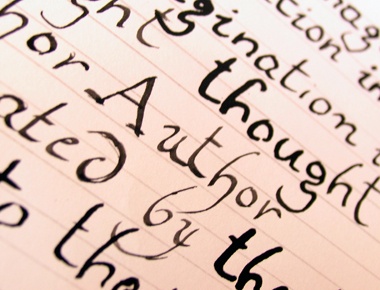But good handwriting is a skill worth honing, especially in a digital age, and for plenty more than writing your aging grandmother — although I’m sure she appreciates legible writing.
Bad Handwriting Kills
In any given year, approximately 7,000 people die because a pharmacist couldn’t read a prescription. And while prescription pads will likely become electronic in the future, there will always be professions that rely on hastily jotted notes. Not all of these jobs will go electronic any time soon. Consider construction sites: not practical places for most electronic devices. But if you wander around a building site before anyone gets around to painting, you’ll see pencil marks on most of the lumber. Measurements, locations and quantities are all written on the wall, and while an illegible note might not kill anyone, there’s a high likelihood it could cost a contractor some money.
Good Handwriting Saves Lives
There are several diseases and conditions that can affect the brain and, in turn, the motor skills required for writing notes by hand. Neurologists can often tell a great deal about what is happening inside someone’s skull by looking at samples of their handwriting — especially if they have past samples. For instance, you can follow the progression of Parkinson’s disease in a patient very clearly through writing samples — handwriting can show the affects of the disease even in very early stages. Different neurological disorders manifest themselves in different ways, especially on paper. Some can cause an overall decay in handwriting skills, while others can cause a patient to drop letters or words. There are, of course, a wide variety of psychologists who use graphology (handwriting analysis) for the purpose of understanding a person’s mindset as well. However, there is far more controversy about graphology than the simple observances made for the purpose of diagnosing neurological problems.
Handwriting as Learning Mechanism
Handwriting notes is a technique recommended by many educators as an excellent way to cement ideas in your mind. But handwritten notes work best if you can go back and look them over — and can tell just what they say. Pen and paper also offer a flexibility for diagramming that just isn’t available in word processing software. You can draw arrows quickly and create mind maps that aren’t restricted by a programmer that you’ve never met. You can even tear up paper (or use smaller pieces) and shift them around. Writing out papers or notes by hand can also help provide a certain amount of focus that is difficult — if not impossible — with a computer. I know I have trouble focusing on a writing project when I want to check my email, read a few blogs or generally distract myself with the internet. To keep myself on track, I’ve had to pick up a pad of paper and go somewhere without a computer. Some days, it’s the only way I can stay focused.
Preparing for Emergencies
What if your power goes out? Your Blackberry runs out of juice? You’re stranded away from a printer? There are times that legible handwriting is absolutely crucial. Whether the power is on or off, odds are you have work that must get done. You may have to write out a document by hand and FedEx it to a client, or you may be writing in order to type it up later. You may even have to scribble down the phone number of a tow truck. No matter which, the effort is worthless if no one can read it afterwards. It’s practically a version of Murphy’s Law: if you write down something important, it’s bound to be illegible. And there are jobs that may take you away from your computer — hard to believe, but true. If you’re interested in philanthropic work that will take you deep into a third world country, it’s in your best interest to have good handwriting. Even if you have access to email at all hours of the day, the people you might work with probably won’t.
Handwriting is a Digital Age Skill
Handwriting is an important skill — equally important to that ability to type 75 words per minute that you listed on your resume. You may not need to spend hours a day on perfecting your letters, but writing often enough to maintain a legible hand is worth your time. If nothing else, writing a long letter or outlining your next project can give your mouse hand a rest and stave off carpal tunnel syndrome a little while longer. Writing uses far different muscles in your hands than typing and can break up a series of repetitive actions: consider handwriting a stretching exercise. And you don’t need to go to the extreme of calligraphy. All you need is a legible style of writing: writing as if you left your mental caps lock on can be a quick way to write an easy-to-read note. A suggestion to keep in mind, though, is that writing in capital letter or in print usually takes longer than cursive. If you’re going to work towards legible handwriting, cursive letters may be the most productive in the long run.
